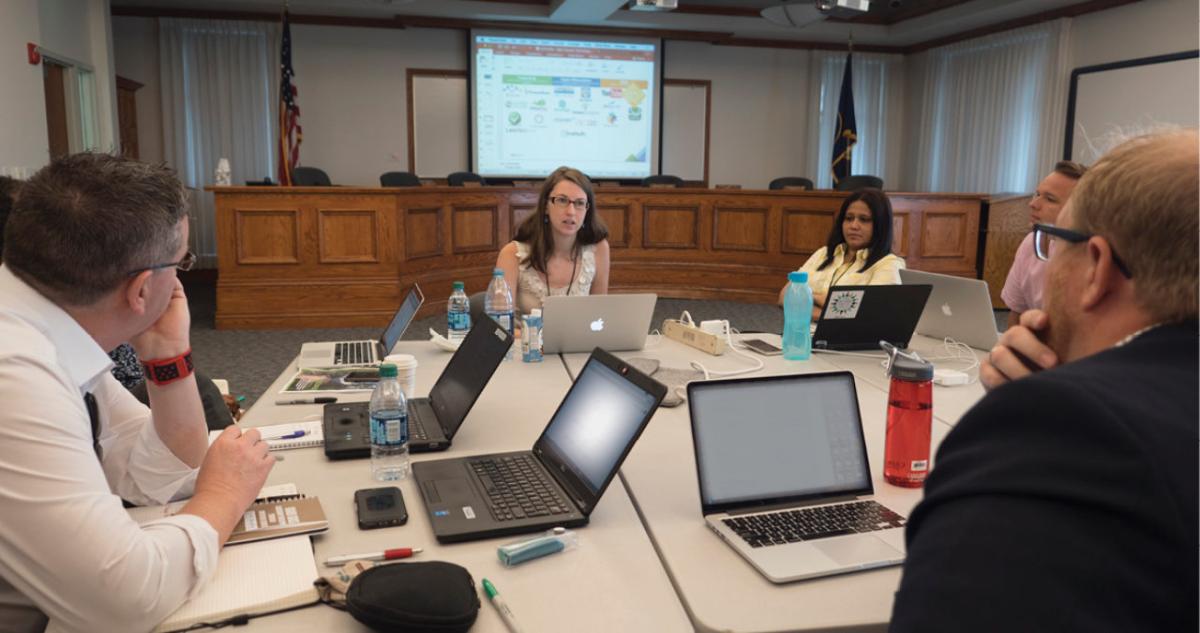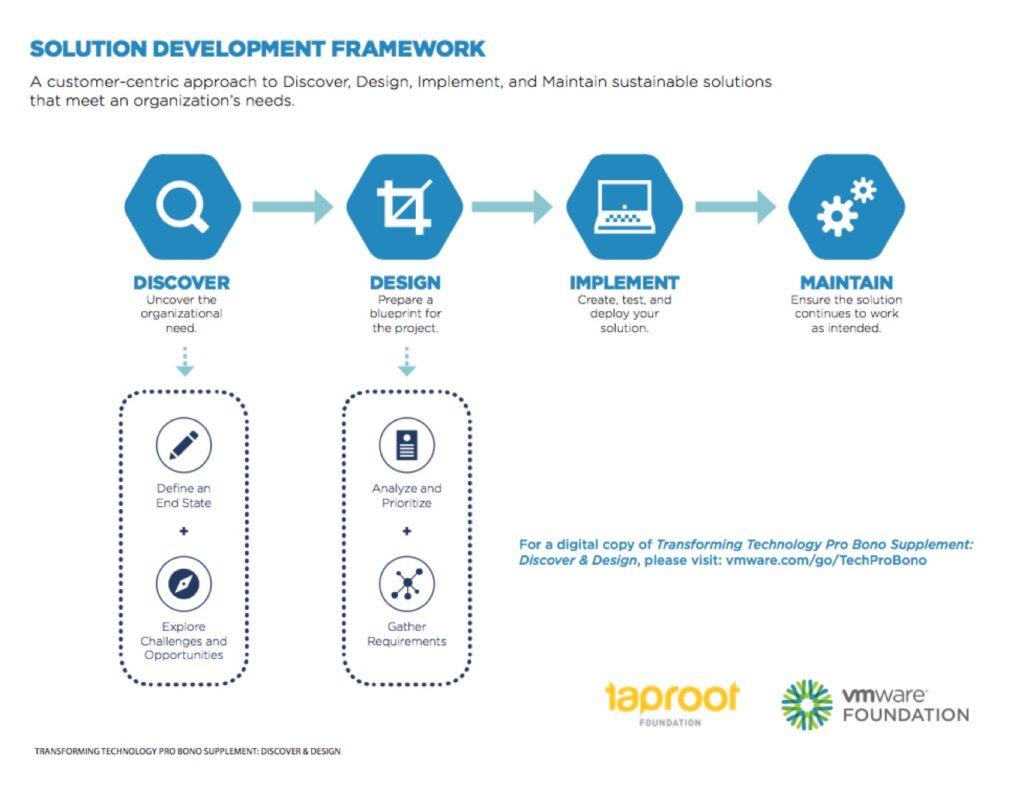How to Help Enable Nonprofits with Technology
Software has the power to unlock new possibilities for people, and for the planet. And yet, not everyone is benefiting equally from automation and operational efficiency. NTEN’s 10th Annual Nonprofit Technology Staffing & Investment report showed that the average technology budget of nonprofits is 5.7 percent of their total operation budget, with only 28 percent of organizations often or regularly using technology volunteers. Pro bono service learning can help enable nonprofits with technology, processes and people, giving it what it needs to thrive and ultimately bridging the growing digital divide.
A new publication, Transforming Technology Pro Bono Supplement – Discover and Design, released in collaboration with the VMware Foundation and Taproot Foundation expands on initial research, which introduced the Solution Development Framework, a phased-approach to discover, design, implement, and maintain sustainable solutions that meet nonprofit needs. This supplement focuses on how to take a customer-centric approach to discover and design. Studies show that investing in these two phases with a customer can result in going to market 2x faster, 301 percent return in investment, 33 percent less development and testing time, and 50 percent fewer bugs or defects.
“Technology underscores everything at a nonprofit—from basic operations to innovative services,” says co-author and Taproot consultant Ava Kuhlen. “Successful technology pro bono projects require seeing the nonprofit as the customer. This means investing in discovering what the nonprofit needs and then designing a sustainable solution together that the nonprofit needs, uses and maintains.”
“VMware takes a customer-centric approach to accelerate its customers’ digital journeys,” says Jessamine Chin, VMware Foundation Director. “We see the growing gap in nonprofit digital transformation. To meet this need, our people can contribute their professional talents to co-create innovative solutions with nonprofit staff – driving positive social change.”
Tech pro bono engagements not only have the potential to help transform the nonprofit sector, but also provide an experiential learning opportunity for technology professionals and nonprofit staff to develop as leaders. Notably, people have an opportunity to hone the talents required for the workforce of the future by navigating volatility, uncertainty, complexity and ambiguity.
The Solution Development Framework and approach can be adopted by technology professionals, nonprofit staff, corporate engagement programs, and donors to help enable nonprofits with technology to run more efficiently, ultimately better serving their respective missions. “VMware is committed to advance the conversation of tech pro bono to support nonprofits in their digital journey,” says Chin.



